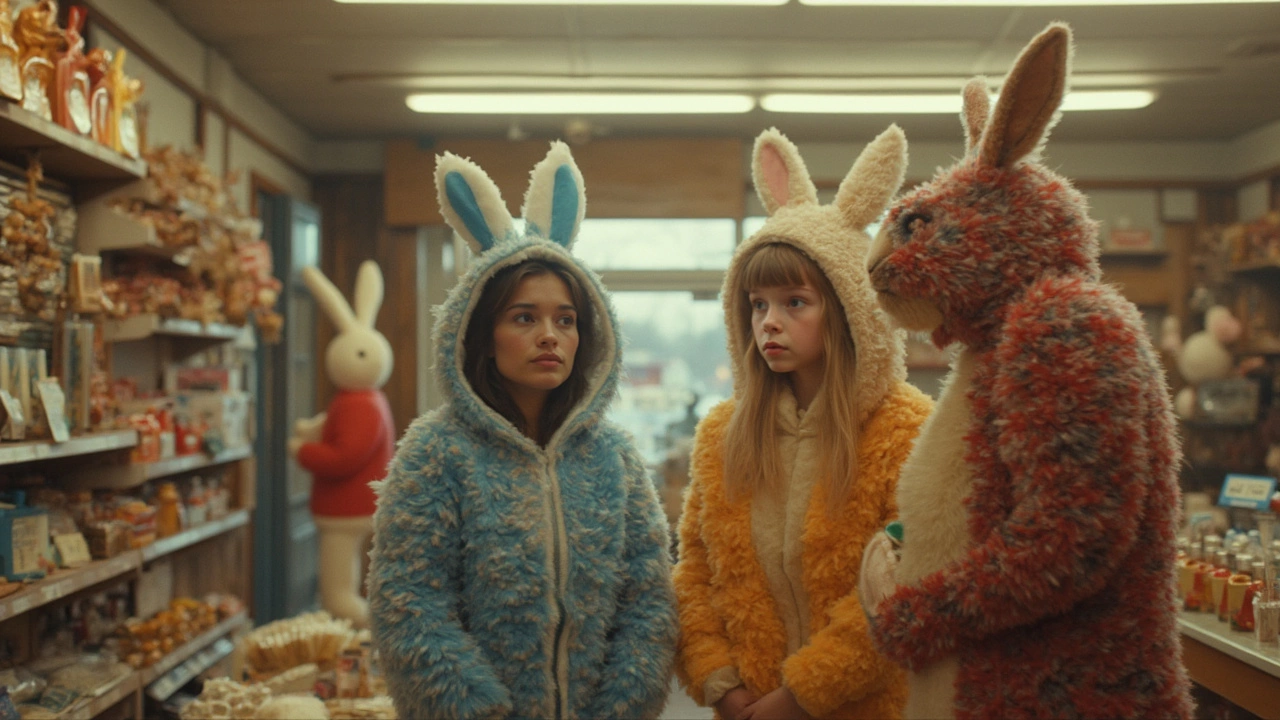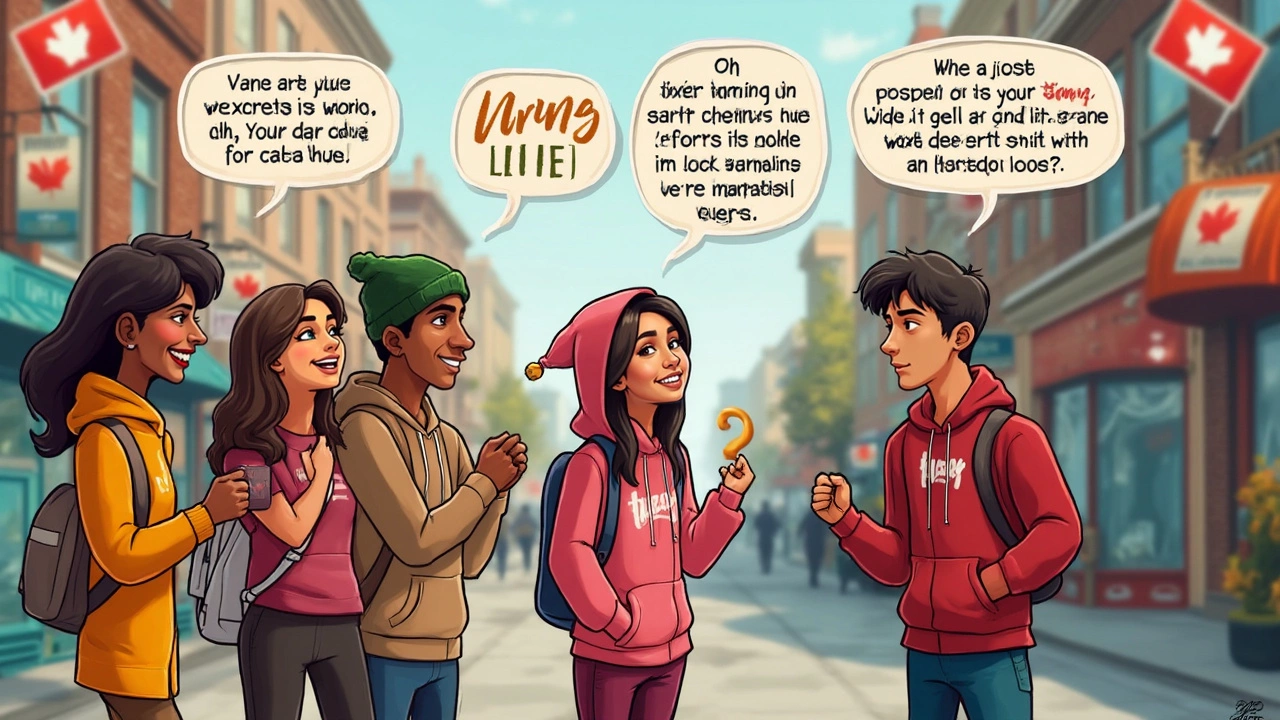Imagine strolling through a chilly street in Saskatchewan and someone asks, “Did you grab your bunny hug?” If you’re not from the Canadian Prairies, you’re likely picturing an adorable rabbit or maybe some sort of teddy bear. But around here, “bunny hug” means something very different. It’s not a rabbit. It’s not a dance. In plenty of places in Canada, and most of the English-speaking world, you’d just call it a hoodie. Yet, in Saskatchewan, folks have stuck with “bunny hug” for decades. Why? Let’s peel back the fluffy layers and see what makes this little piece of language so special.
The Unmistakable Saskatchewan Slang
If you grew up in Regina or Saskatoon, “bunny hug” isn’t a mystery. You throw it on for crisp autumn football games or when the temperature takes a nosedive in March. Whenever you see that cozy, hooded sweatshirt—especially the kind with a big front pocket—it’s a bunny hug. But step out of Saskatchewan and people ask, “What’s a bunny hug?”
The truth is, almost nobody outside Saskatchewan says bunny hug—not even neighboring provinces. Surveys and polls run by Canadian universities, like the University of Regina, show that over 90% of Saskatchewanians know and use the nickname, but it’s almost unheard of in Alberta or Manitoba. In a 2016 survey, just 7% of residents outside Saskatchewan recognized the term, compared to 93% in the province. That’s a sharp line in the linguistic sand.
The phrase’s exclusivity has turned it into a badge of honor. If you show up to a Saskatchewan Roughriders game in a bunny hug, you’re in the know. It’s like a secret handshake—one that keeps you warm. Saskatchewan-based companies frequently use the term on merchandise, capitalizing on local pride. Try searching for "bunny hug" online, and you’ll find dozens of Prairie-made clothing brands championing the name. For the rest of Canada, it’s a hoodie. But here, the label is non-negotiable.
So, what makes Saskatchewan so determined to hang onto the bunny hug? In part, it’s a mix of stubbornness and love for the region’s quirky traditions. Folks from Saskatchewan describe the phrase as a point of identity, linking them to home no matter where they roam. It’s the kind of word that shows up in family group chats, on local restaurant menus (as a burger topping, bizarrely), and even in the Saskatchewan legislature—from time to time, politicians have joked about making “bunny hug” the official provincial attire.
It’s also just a way of poking fun at outsiders. If your cousin from Toronto can’t wrap their head around it, well, isn’t that half the charm?

How Did Bunny Hug Start? Untangling the Origins
This is where the history turns fuzzy—pun very much intended. If you go digging for the exact moment “bunny hug” popped up in Saskatchewan, you won’t find a single, bulletproof origin story. But historians, linguists, and old-timers all have theories worth exploring.
One explanation traces back to early 20th century North America, where “bunny hug” actually referred to a wildly popular dance around 1912. The Bunny Hug was a loose, swinging partner dance, and it even got banned in some places for being too risqué. In this context, people speculated that the dance’s cuddly name somehow stuck to hooded sweatshirts, maybe as a tongue-in-cheek nod to the ‘cuddly’ way they fit. But there’s no solid proof tying the dance and the sweater together.
Others suggest that the original “bunny hug” was a pullover with fur lining in the hood or cuffs, resembling a bunny’s fur. Some of the earliest hooded sweatshirts in Saskatchewan, according to stories passed down from local seamstresses, were homemade with extra-warm lining sewn in for those brutal Prairie winters. Kids said they felt like they were being hugged by a bunny. The nickname stuck with that generation, then snowballed as a term of affection for all hoodies.
Another possibility: it’s just a cute, regional euphemism. Saskatchewan has a reputation for making words more fun—think of “doughgods” (bannock) or “gitch” for underwear. People here like to soften things, so it’s no real stretch to turn “hoodie” into something gentler and friendlier.
To get a sense of just how long this word has lingered, local newspapers from as early as the 1970s reference bunny hugs, usually in stories about school spirit or sports teams. That puts the modern usage at least 50 years old. Unlike many slang terms that fizzle out, this one’s stubborn as a Saskatchewan winter.
If you try and find the exact moment and reason “bunny hug” replaced hoodie in Saskatchewan, it gets even murkier. Most language experts believe it’s a blend of all these influences. Kids who grew up in rural and Northern Saskatchewan in the 1960s and ’70s passed it down to their younger cousins and siblings. Peer pressure probably helped, too—after all, who wants to be the only kid in class calling your new hoodie a “hooded sweatshirt” when everyone else calls it a bunny hug?
By the ’80s, it was embedded in school slang, local advertising, and casual conversation. Today, you’ll even see politicians and celebrities from Saskatchewan posting photos in their bunny hugs for various causes. It’s become inseparable from the local identity, and that’s a big reason why nobody’s in a hurry to let it fade away.
| Year | Reference to "Bunny Hug" in Saskatchewan Media |
|---|---|
| 1970s | School sports articles, class photos |
| 1980s | Advertisements, fundraiser promos |
| 1990s | Merchandise, gift shop souvenirs |
| 2000s | Online forums, social media |
| 2010s | Celebrity endorsements, government initiatives |

Should You Call It a Bunny Hug? Tips to Rock Regional Language
Now comes the practical part: when should you use the term, and when should you stick with “hoodie” instead? If you’re passing through Saskatchewan, calling it a “bunny hug” is an instant way to connect. Locals light up when someone from out of province drops the word into conversation—it’s a quick way to say, “Hey, I get you.” If you’re buying a souvenir, especially at a Rider’s game or any Saskatchewan tourism spot, there’s a good chance the label already features “bunny hug” big and bold.
If you’re not from Saskatchewan but want to join the fun, here are a few tips to avoid sounding like you’re trying too hard:
- Use it casually—don’t make a big announcement. Just say, “Hey, pass me my bunny hug, would ya?”
- Remember it means “hoodie” specifically. Don’t call a zip-up fleece or a sweater without a hood a bunny hug. The key points: a hood and a front pouch pocket.
- Expect a smile or a laugh. People love to hear outsiders try it for the first time.
- If you’re in a different province or country, be ready to explain what the word means. Most people will honestly just think you’re making it up!
Of course, not everyone in Saskatchewan insists on the term. Some younger folks and urbanites just say “hoodie” because of social media influence. But if you want a blast of local flavor, it’s hard to beat.
Should you buy your own bunny hug? Absolutely—if for no other reason than it’s a killer conversation starter. Many regional brands decorate their bunny hugs with classic Saskatchewan symbols: wheat stalks, Northern Lights, bison, or team logos. If you want to show off a bit of your travels, or just let the world know you’ve spent some time on the Prairies, it’s one souvenir you’ll actually wear. And they’re warm—Saskatchewan gets cold. The average January temperature in Regina hovers around -14°C (7°F), so a thick hoodie’s more than just a trend there. Sometimes, it’s all that stands between you and the biting wind.
If there’s a guy in the world who will never get tired of explaining *why* it’s called a bunny hug, it’s any Saskatchewanian who’s moved to a bigger city. I once met a college student from Saskatoon living in Vancouver; she said, “My bunny hug is a security blanket. People tease me, but I don’t care.” That’s the thing—language changes all the time, but certain words stick. Sometimes because they’re practical, sometimes just because people love them. “Bunny hug” is one that stuck, and it’s not going anywhere.
The next time you visit Saskatchewan, keep your ears peeled for this oddball phrase. Drop it into a conversation when the temperature dips and see how people react. If you want the full Prairie experience, don’t just wear a hoodie. Wear a bunny hug. You may find it’s more than just a piece of clothing—it’s a little slice of home, even if you’re a long way from where the tradition started.

